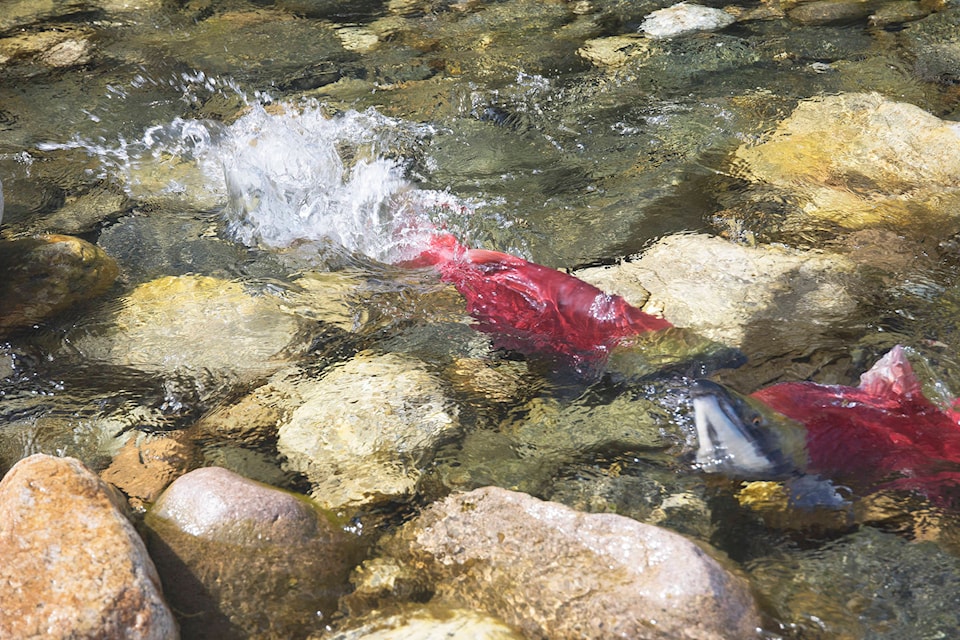After a bit of a slow start, about half the expected late-run sockeye salmon have begun their long journey home to the Shuswap.
Based on recent test fisheries, the number of late-run sockeye returning to the Shuswap is approximately 4.8 million, of which about 2.15 million have been caught in commercial, recreational and First Nations fisheries.
Small marine recreational and Indigenous fisheries remain open and some fish will die, says Mike Lapointe, senior biologist with the Pacific Salmon Commission.
Related: Video: Close to six million late-run sockeye are heading to the Shuswap.
“About 1.25 million were up (the Fraser River) prior to today and there’s still over a million holding in the Strait of Georgia,” he said on Sept. 19, noting daily estimates of sockeye moving past Mission were about 30,000 or 40,000 a day prior to the 15th. “Since Saturday, there were 150,000 a day for two days, on Monday there were 85,000 and today is expected to be 140,000.”
Including fish mortality and those taken in fisheries, Lapointe expects some 750,000 late-run sockeye will make it to their Adams River spawning grounds, a number similar to the 2014 dominant year.
Lapointe says the first big homeward push up the Fraser that began on the weeked is the latest start for the late-run sockeye since 1995. In most years, the mid point of the run is Sept. 19.
Related: Nearly 7 milllion late-run sockeye due to return to Shuswap
While Fisheries officials believed there were a possible 3.5 million late-run sockeye still holding in the Strait of Georgia, test fisheries on Tuesday, Wednesday and Thursday of last week indicate the number is likely closer to 1.5 million remaining.
“The reason for the significant drop is related to unavailability,” suggests Lapointe, noting the trollers cannot get into the Fraser River delta or in shallow waters off the Lower Mainland. “There is a huge amount of crab gear in the delta so the trollers are in deep water.
Conditions in the Fraser River are good, he says, with temperatures about one-half a degree Celsius below average and flow that is about 20 per cent below average for this time of year.
Given that the salmon swim about 40 kilometres a day, Lapointe says it will be 10 days to two weeks before the first push of the late-run sockeye arrive at the Squilax Bridge.
@SalmonArm
barb.brouwer@saobserver.net
Like us on Facebook and follow us on Twitter
